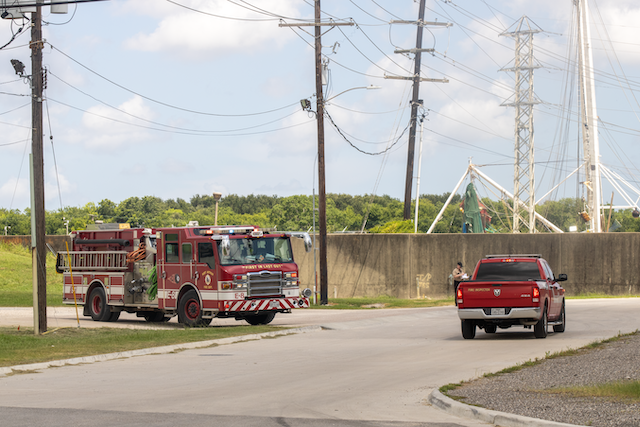SETERF weighs ‘unmet needs’
Published 7:42 pm Thursday, December 13, 2018

- Vernon Pierce, left, stands with Janie Johnson of the United Way of Mid & South Jefferson County. (Ken Stickney/The News)
An interim point man for Jefferson County’s flood recovery says he’s learning the job — and his organization’s potential — as he moves along.
The County Commission in October designated Southeast Texas Emergency Relief Fund as the Jefferson’s long-term recovery group, Vernon Pierce, interim executive director, told the Port Arthur Rotary Club on Thursday.
Trending
For now, that means coordinating private agency efforts to help citizens rebuild their lives. Eventually, it may include producing plans and stockpiling goods to meet future natural disasters.
Pierce, retired from duties that included being an incident commander for Entergy, was responsible for restoration after Hurricanes Rita in 2005 and Ike in 2008.
He said SETERF was initiated after Hurricane Katrina in 2005 sent New Orleans residents fleeing to Southeast Texas. Three weeks later, Hurricane Rita attacked the western Gulf Coast, including Southeast Texas.
“They’ve given away about $71/2 million of donated money,” he said of SETERF. “They just want to help folks.”
Since taking the lead on coordinating county relief efforts, Pierce said his organization has worked with caseworkers from organizations that include Red Cross, Habitat for Humanity, St. Vincent de Paul, the Salvation Army and more. He said a key function is to make sure services and resources aren’t duplicated.
Among the principal mandates is to see that some resources go to “unmet needs” of people who have exhausted their efforts to acquire aid but need more help.
Trending
That’s where organizations like Catholic Charities have stepped in to make a difference, he said.
“We’re not going to replace the flower vase on a table,” he said, but organizations working with SETERF can help in areas such as acquiring needed furniture.
Pierce said most people recognize that in a disaster cycle, there is the initial incident, a community response and short- and long-term recovery efforts.
But he said there is more to meeting disaster challenges, including laying out plans for how a community will meet a disaster and establishing a stockpile of goods and supplies in the event of a disaster. That, he said, is something SETERF is weighing for the future, in addition to meeting the imminent challenges of Harvey recovery.
He also pointed to spiritual and emotional needs that can beleaguer disaster victims.
“We’re trying to figure all that out,” he said about SETERF’s long-term role.
“I can’t say enough good things about what people have done,” Pierce said, lauding the church, charitable and social service agencies with which he works every day.
He said recovery may take many months or even years.
“There is a lot of hurt out there,” he said. “We need to see what we can do to make it better.”





